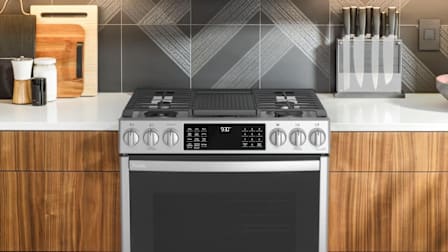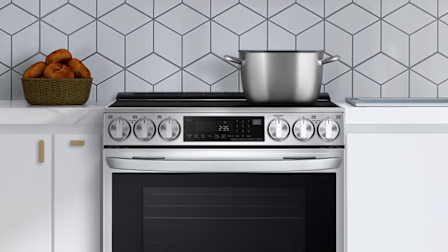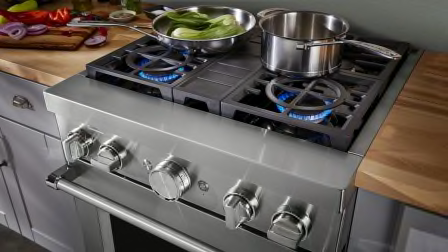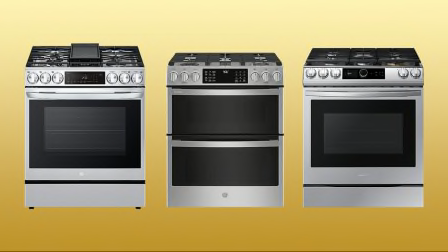How to Use the Griddle Burner on Your Gas Range
This feature is often ignored. Maybe it's time to unleash its full potential.
When you shop through retailer links on our site, we may earn affiliate commissions. 100% of the fees we collect are used to support our nonprofit mission. Learn more.
For decades, almost every 30-inch gas range in the world came equipped with four burners, spaced equidistant across the cooktop. But if you’ve purchased a gas range in the past 10 years, there’s a decent chance yours also comes with a griddle burner. That’s because manufacturers realized they could squeeze in a fifth, oblong burner in the center of a gas range, and throw in a separate long, narrow, griddle as part of the package.
What’s the Griddle Burner on Your Gas Range For?
The short answer is breakfast and the occasional grilled sandwich. Most griddle burners are designed to generate moderate heat across a large, flat surface. That makes them ideal for foods prone to burning over high heat, and specifically, those that might benefit from the larger, uninterrupted cooking surface, without sides, which also makes it easier to flip food. They’re ideal for eggs, bacon, home fries, and pancakes. And one of the best parts of a griddle burner is you can cook all those foods at once, with only one dish to clean at the end, rather than washing three separate skillets. And because of their oblong rectangular shape, griddle burners also superb for grilled cheese sandwiches—allowing you to fit six or even eight sandwiches made on square bread, while even a large, 12-inch skillet or griddle pan might hold only three sandwiches at a time.
What You Shouldn’t Cook on a Griddle Burner
The single biggest limitation of most built-in griddles is their inability to sear over high heat. To be clear, the griddle on your gas range is a far cry from the high-heat flat tops used for searing food in restaurants. We reviewed the output on griddle burners from most major brands, and found that on average, these burners put out about 10,000 Btu. For comparison, the highest output burner on most gas ranges is usually 15,000 to 20,000 Btu, making the latter far better suited for something like searing a steak or a piece of tuna. Another misconception is that these burners are designed for deglazing a roasting pan. While you can certainly place a roasting pan, instead of a griddle, on the oblong burner below, the relatively low output of the burner makes it less than ideal for deglazing or making a pan sauce. Instead, you’re better off spreading a roasting pan across two burners of the same size and using both burners at once.
Alternatives to a Griddle Burner
If your gas range came without a built-in griddle burner, fear not—you can easily buy a griddle or griddle pan and use it on your stove’s regular burners.
A griddle is typically a large flat cooking surface, designed to rest on top of your stove, stretched between two burners. You’ll get the best results if you spread it across two burners of the same output—more often than not, you’ll find those similarly sized medium-output burners on the left side of your cooktop. Those are the ones to use to ensure uniform heating.
A griddle pan is another good option. It’s essentially an extra-large frying pan, with low sides, designed to make it easy to flip foods. The lone downside to a griddle pan over a true griddle is that it tends to be smaller. But the benefit is you can place it over a higher heat burner if you want it sizzling hot for searing. A paella pan, if you already have one, also works nicely in a pinch—its large size and low sides are pretty close to the dimensions of a griddle pan.
Three Stellar Gas Ranges With Built-In Griddle Burners
The single- and double-oven gas ranges here provide stellar performance, and each includes an integrated griddle burner on the cooktop.





























